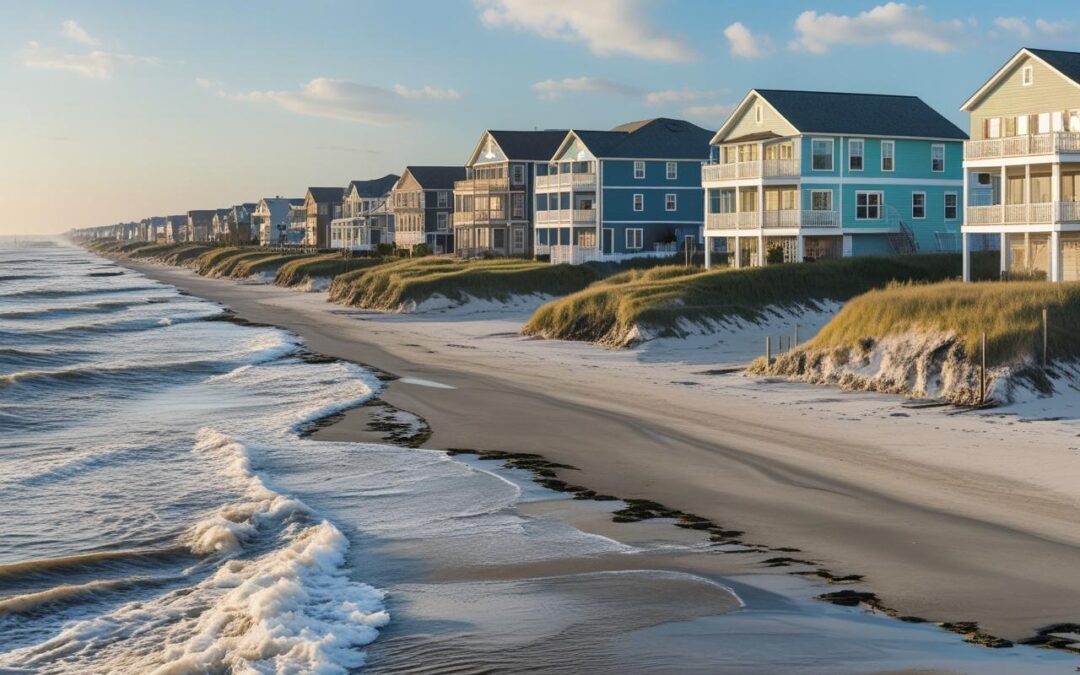The United States is home to some of the most beautiful and expensive coastal real estate in the world — from Florida’s sunny beaches to California’s Pacific shores. But in recent years, climate change has started to rewrite the rulebook for coastal property ownership. Rising sea levels, stronger storms, and unpredictable weather patterns are not just environmental issues anymore — they’re financial and personal ones too.
How Climate Change is Impacting Coastal Properties
Rising Sea Levels
Global warming is causing glaciers and polar ice caps to melt, leading to a steady rise in sea levels. This means many coastal properties in states like Florida, Louisiana, and New Jersey are now facing higher flood risks than ever before.
Stronger Hurricanes & Storm Surges
Warmer ocean temperatures give storms more power, leading to hurricanes with stronger winds and heavier rainfall. These extreme weather events can damage homes, erode shorelines, and increase insurance costs.
Erosion of Shorelines
Coastal erosion is a slow but steady threat. Over time, beaches and cliffs wear away, sometimes taking valuable land (and even buildings) with them.
Financial Risks for Homeowners
Declining Property Values – Buyers are becoming cautious about investing in high-risk coastal zones, which can lower resale values.
Rising Insurance Premiums – Flood and hurricane coverage is getting more expensive — and in some areas, harder to get.
Maintenance & Protection Costs – Sea walls, elevated foundations, and flood-proofing measures all require significant investment.
How Homeowners Can Protect Their Coastal Property
Understand Your Flood Zone – Check FEMA flood maps to know your property’s risk level.
Invest in Resilient Building Design – Elevated structures, hurricane-resistant windows, and waterproof materials can reduce damage.
Consider Climate-Proof Landscaping – Use plants and designs that help absorb water and reduce erosion.
Stay Informed About Local Policies – Some states offer grants or tax breaks for climate adaptation projects.
The Human Side of Coastal Living in a Changing Climate
For many Americans, living by the coast is more than just a lifestyle — it’s a dream. The sound of the waves, ocean sunsets, and fresh sea breeze are priceless experiences. But as climate change accelerates, that dream comes with new responsibilities.
It’s no longer just about buying a beautiful home — it’s about planning for the future, protecting your investment, and making choices that help the environment. Whether that means upgrading your property for resilience or supporting community climate initiatives, every action counts.
Final Thoughts
Climate change isn’t a distant problem anymore — it’s already shaping the future of the USA’s coastal real estate market. Homeowners who take proactive steps now will not only protect their properties but also help preserve the beauty of America’s shorelines for generations to come.

